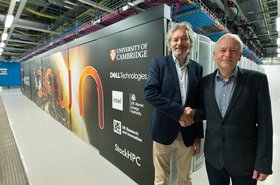HPE has built a sixth-generation high-performance computing cluster, Iridis 6, for the UK's University of Southampton.
The new system expands on the university’s existing compute resources, and will provide four times the performance whilst only requiring 70 percent of the power consumed by its predecessor, Iridis 5.
Iridis 6 is comprised of HPE ProLiant Gen11 servers, powered by 4th Gen AMD Epyc processors, and has 26,496 cores across 138 nodes, with 3Tb of memory.
HPE confirmed to DCD that currently the system achieves approximately 1 petaflops of HPL (high-performance Linpack) performance but stated that the university is planning to deploy more nodes in the future, so that number is subject to change.
The university will use the supercomputer to advance research in areas such as genomics, aerodynamics, and renewable batteries.
Speaking about the upgraded system, Chris Yorke, associate director research IT, University of Southampton, said that over the past 12 months, the university has seen an increased demand for HPC capabilities from its staff and students, driven by growth in AI research cases and numbers of joint projects with local and regional businesses.
“We are very conscious of the fact that our HPC systems are responsible for a significant part of our energy consumption,” he said. “To align with our sustainability strategy for Iridis 6, we required a system that would deliver exponentially higher performance at a lower power consumption – and HPE’s expertise in building energy-efficient HPC systems was crucial in achieving this.”
The system’s predecessor, the 1.31 petaflops Iridis 5, was first switched on by the university in February 2018, and ranked 354th on the Top500 list of the world’s most powerful supercomputers published in June that same year. It has not received a ranking on any subsequent Top500 list.







